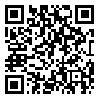1. American Psychiatric Association. Diagnostic and Statistical Manual of Mental Disorders (DSM-5®). New York: American Psychiatric Pub; 2013.
2. Chien W-T, Chan SWC, Morrissey J. The perceived burden among Chinese family caregivers of people with schizophrenia. J Clin Nurs. 2007;16(6):1151–61. [
DOI]
3. Duckworth K, Halpern L. Peer support and peer-led family support for persons living with schizophrenia. Curr Opin Psychiatry. 2014;27(3):216–21. [
DOI]
4. Sadock BJ, Sadock VA, Ruiz P. Kaplan and Sadock’s Synopsis of Psychiatry: Behavioral Sciences/Clinical Psychiatry. Philadelphia: Lippincott Williams & Wilkins; 2011.
5. Meyer MB, Kurtz MM. elementary neurocognitive function, facial affect recognition and social-skills in schizophrenia. Schizophr Res. 2009;110(1–3):173–9. [
DOI]
6. Millier A, Schmidt U, Angermeyer MC, Chauhan D, Murthy V, Toumi M, et al. Humanistic burden in schizophrenia: a literature review. J Psychiatr Res. 2014;54:85–93. [
DOI]
7. Hook D. Six Moments in Lacan: Communication and Identification in Psychology And Psychoanalysis. New York: Routledge; 2017.
8. Kelly FD. The Assessment of Object Relations Phenomena in Adolescents: Tat and Rorschach Measures. New York: Routledge; 2014.
9. Sandhu N, Prabhakar R. Factors influencing the quality of work life in the Indian banking industry–an empirical study. IPEDR. 2012;55(23):115-9.
10. Westen D. Social cognition and object relations. Psychological Bulletin. 1991;109(3):429–55. [
DOI]
11. Hansen CF, Torgalsbøen A-K, Røssberg JI, Romm KL, Andreassen OA, Bell MD, et al. Object relations, reality testing, and social withdrawal in schizophrenia and bipolar disorder. J Nerv Ment Dis. 2013;201(3):222–5. [
DOI]
12. Hansen CF, Torgalsbøen A-K, Røssberg JI, Andreassen OA, Bell MD, Melle I. Object relations and reality testing in schizophrenia, bipolar disorders, and healthy controls: differences in profiles and clinical correlates. Compr Psychiatry. 2012;53(8):1200–7. [
DOI]
13. Reinares M, Bonnín CM, Hidalgo-Mazzei D, Sánchez-Moreno J, Colom F, Vieta E. The role of family interventions in bipolar disorder: A systematic review. Clin Psychol Rev. 2016;43:47–57. [
DOI]
14. McFarlane WR. Family Interventions for Schizophrenia and the Psychoses: A Review. Fam Process. 2016;55(3):460–82. [
DOI]
15. Koutra K, Triliva S, Roumeliotaki T, Lionis C, Vgontzas AN. Identifying the socio-demographic and clinical determinants of family functioning in Greek patients with psychosis. Int J Soc Psychiatry. 2015;61(3):251–64. [
DOI]
16. Condruz C. Is mental illness a form of violence against the self? Notes on ego disintegration in schizophrenia. Hum Stud [Internet]. 2019; [
Article]
17. Kline RB. Principles and Practice of Structural Equation Modeling. New York: The Guilford Press; 2015.
18. Holaday M, Glidewell R. Book Review: Bell Object Relations and Reality Testing Inventory (BORRTI). Journal of Psychoeducational Assessment. 2000;18(1):68–71. [
DOI]
19. Hadinezhad H, Tabatabaeian M, Dehghani M. A preliminary study for validity and reliability of bell object relations and reality testing inventory. Iranian Journal of Psychiatry and Clinical Psychology. 2014;20(2):162–9. [Persian] [
Article]
20. Mohseni M, Chimeh N, Panaghi L, Mansoori N. A comparison of family function and expressed emotion in families with rheumatoid arthritis patients and families with schizophrenia patients. Journal of Family Research. 2011;7(27):373. [Persian] [
Article]
21. Kay SR, Opler LA, Lindenmayer JP. The Positive and Negative Syndrome Scale (PANSS): Rationale and standardisation. Br J Psychiatry Suppl. 1989;(7):59–67.
22. Ghafari E, Fararouie M, Shirazi HG, Farhangfar A, Ghaderi F, Mohammadi A. Combination of estrogen and antipsychotics in the treatment of women with chronic schizophrenia: a double-blind, randomized, placebo-controlled clinical trial. Clin Schizophr Relat Psychoses. 2013;6(4):172–6. [
DOI]
23. Becker J-M, Klein K, Wetzels M. Hierarchical latent variable models in PLS-SEM: Guidelines for using reflective-formative type models. Long Range Planning. 2012;45(5):359–94. [
DOI]
24. Marder SR, Galderisi S. The current conceptualization of negative symptoms in schizophrenia. World Psychiatry. 2017;16(1):14–24. [
DOI]
25. Thompson E, Rakhshan P, Pitts SC, Demro C, Millman ZB, Bussell K, et al. Family functioning moderates the impact of psychosis-risk symptoms on social and role functioning. Schizophr Res. 2019;204:337–42. [
DOI]
26. Lee H-S, Corbera S, Poltorak A, Park K, Assaf M, Bell MD, et al. Measuring theory of mind in schizophrenia research: Cross-cultural validation. Schizophr Res. 2018;201:187–95. [
DOI]
27. Carsky M, Rand SN. Conflict between fantasy and reality: A patient and therapist talk about psychotherapy and schizophrenia. Psychoanalytic Psychology. 2018;35(4):401–9. [
DOI]
28. Thibierge S, Morin C. The self and the subject: a psychoanalytic lacanian perspective. Neuropsychoanalysis. 2010;12(1):81–93. [
DOI]
29. Diamond D. Changes in object relations in psychotherapy with schizophrenic patients: Commentary on Carsky and Rand. Psychoanalytic Psychology. 2018;35(4):410–3. [
DOI]
30. Seyed Tabaee SR, Abbasi M, Rahmati Nejad P, Mohammadi SD. Family function and quality of life in patients with schizophrenia and bipolar spectrum disorders: A patient-centered study. Ann Mil Health Sci Res. 2018;15(4): e79866. [
DOI]
31. Harvey C. Family psychoeducation for people living with schizophrenia and their families. BJPsych Advances. 2018;24(1):9–19. [
DOI]

 ، نادر منیرپور*
، نادر منیرپور* 
 1، ناصر گودرزی2
1، ناصر گودرزی2 
 ، ارسیا تقوا3
، ارسیا تقوا3 



